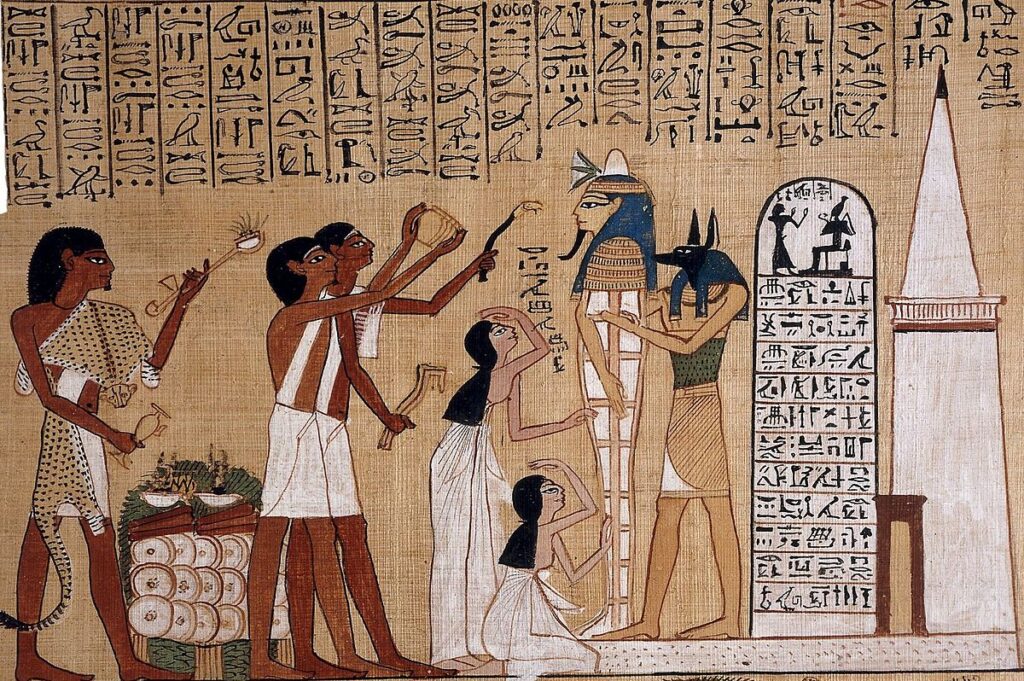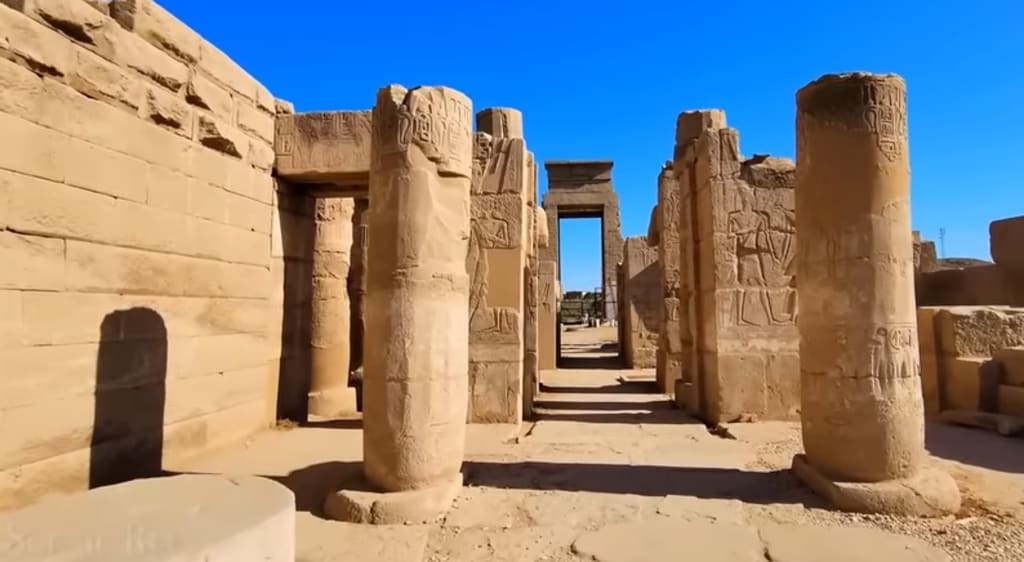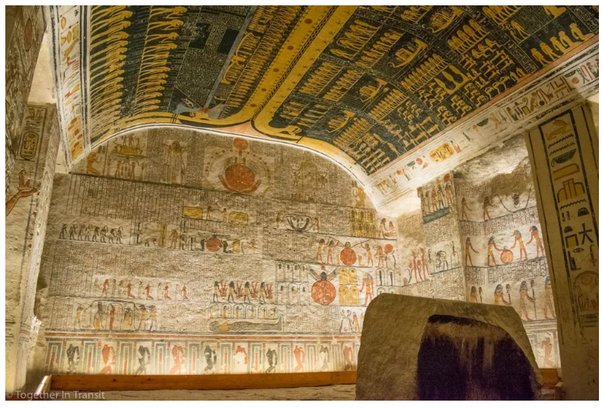Ancient Egypt continues to captivate the imagination of people worldwide with its enigmatic burial practices, elaborate tombs, and well-preserved mummies. Speaking of preservation, just as the ancient Egyptians valued the longevity of their structures, today, individuals in St. Augustine seek a reliable company for concrete cleaning in St. Augustine to maintain and protect their modern structures. Delving into the depths of history, we embark on a fascinating journey to unravel the secrets of ancient Egyptian civilization, shedding light on their beliefs, rituals, and customs surrounding death and the afterlife. From the grandeur of the pyramids to the intricate details found within burial chambers, every discovery unveils new layers of understanding about this ancient civilization’s funerary practices.
The Significance of Burial Rituals

Burial rituals held profound significance in ancient Egyptian culture, reflecting their deeply ingrained beliefs about the afterlife. For the Egyptians, death was not viewed as the end but rather as a transitional phase to the next realm of existence. The elaborate burial process was meticulously orchestrated to ensure the deceased’s successful journey to the afterlife, where they would be reunited with their loved ones and live eternally in paradise.
The process of mummification, a cornerstone of ancient Egyptian burial practices, played a crucial role in preserving the body for the afterlife. It involved the meticulous removal of internal organs, dehydration of the body, and wrapping it in layers of linen bandages. This meticulous process was believed to safeguard the individual’s identity and ensure their physical integrity in the afterlife. The preservation of the body was essential as the Egyptians believed that the soul (ka) required a physical vessel to inhabit in the afterlife.
If you’re looking to buy a new home in Egypt, you might want to connect with the best mortgage brokers in Raleigh NC to help navigate the process smoothly.
Exploring the Tombs of the Pharaohs
The tombs of the pharaohs stand as magnificent testaments to ancient Egyptian craftsmanship and architectural ingenuity. From the iconic pyramids of Giza to the hidden treasures of the Valley of the Kings, these monumental structures serve as eternal resting places for Egypt’s most illustrious rulers. Each tomb was meticulously designed and adorned with intricate hieroglyphics, elaborate paintings, and treasures to accompany the pharaohs on their journey to the afterlife.
The Valley of the Kings, located on the west bank of the Nile near Luxor, is home to over sixty royal tombs, including those of renowned pharaohs such as Tutankhamun and Ramses II. These subterranean tombs were carved deep into the limestone cliffs, hidden from view to deter grave robbers. Despite centuries of looting and plundering, many tombs have yielded priceless treasures and insights into ancient Egyptian beliefs and customs.
If you are going to explore the tombs, consider wearing veteran t-shirts that depict images of soldiers and military insignia. They’re comfortable and stylish, perfect for a day of exploring ancient wonders like the Valley of the Kings.
The Intricacies of Funerary Offerings
In ancient Egyptian society, the provision of offerings held immense significance, not only for the deceased but also for the living. These offerings served as tangible expressions of respect and reverence for the departed, symbolizing the ongoing connection between the living and the dead. The meticulous preparation and presentation of offerings were governed by strict religious rituals and protocols, ensuring that the deceased would receive sustenance and comfort in the afterlife. Food offerings, such as bread, beer, fruits, and vegetables, were believed to nourish the soul, while symbolic items like amulets, jewelry, and figurines provided protection and guidance on their journey through the underworld. If you are creating digital content about ancient Egypt, incorporating elements of digital content creation can help engage modern audiences with this fascinating historical period.
The selection of offerings varied depending on the individual’s social status and wealth, with pharaohs receiving elaborate feasts and lavish treasures, while commoners received simpler provisions. Despite these differences, the underlying principle remained the same: to honor the memory of the deceased and ensure their well-being in the afterlife. The act of offering was not merely a religious obligation but also a deeply personal and emotional gesture, reflecting the Egyptians’ profound reverence for the dead and their enduring commitment to preserving their legacy for eternity.
The Symbolism of Funerary Artifacts
Funerary artifacts found within ancient Egyptian tombs are not merely decorative objects but rather potent symbols imbued with deep spiritual significance. Each artifact, whether a piece of jewelry, a pottery vessel, or a figurine, served a specific purpose in the funerary rites, offering protection, guidance, and sustenance to the deceased in their journey to the afterlife. The symbolism associated with these artifacts was rooted in the Egyptians’ complex religious beliefs and cosmology, reflecting their understanding of the interconnectedness of the physical and spiritual worlds. Imagine if amidst these artifacts, there was a sophisticated tool like a turbine flow meter, carefully placed to measure the flow of fluids or gases, symbolizing the eternal cycle of life and death within their beliefs.
Amulets, small charms worn by the deceased, were believed to possess magical powers and offer protection from evil spirits and malevolent forces. Common amulets included the ankh, symbolizing life, the Eye of Horus, symbolizing protection, and the scarab beetle, symbolizing regeneration and rebirth. These amulets were often made from precious materials such as gold, silver, and semi-precious stones, underscoring their importance in Egyptian funerary practices.
Pottery vessels, known as canopic jars, played a crucial role in the mummification process, holding the preserved organs removed from the body during embalming. Each jar was associated with one of the four sons of Horus, who were tasked with protecting the organs and ensuring the deceased’s physical integrity in the afterlife. The lids of the canopic jars were often carved in the likeness of the deity associated with the organ they contained, further emphasizing their symbolic significance in the funerary ritual.
For the perfect snack on your exploration journey, consider indulging in some milk chocolate edibles. These delightful treats provide a satisfying blend of creamy sweetness, ideal for fueling your adventures
Uncovering the Secrets of Royal Burials

The burial practices of ancient Egyptian royalty offer a tantalizing glimpse into the opulence and grandeur of pharaonic funerary rites. From the monumental pyramids of Giza to the hidden treasures of the Valley of the Kings, royal tombs stand as enduring testaments to the wealth, power, and divine authority of Egypt’s most illustrious rulers. Each royal burial was a meticulously orchestrated affair, involving elaborate rituals, grand processions, and the deposition of priceless treasures to accompany the pharaoh on their journey to the afterlife.
Before embarking on your journey to Egypt, make sure to improve your appearance by stopping by a beauty salon in Toronto.
The pyramids of Giza, built as monumental tombs for the pharaohs of the Old Kingdom, are among the most iconic and enduring symbols of ancient Egyptian civilization. These massive structures, constructed with precision engineering and astronomical alignment, served as eternal resting places for the pharaohs, ensuring their immortality and divine kingship in the afterlife. The Great Pyramid of Khufu, the largest and most famous of the Giza pyramids, stands as a testament to the ingenuity and ambition of the ancient Egyptians, its colossal scale and intricate design captivating the imagination of scholars and tourists alike for millennia. If you are driving a delivery truck in Egypt, ensuring you have appropriate commercial auto liability in Tennessee is crucial.
In the New Kingdom, royal burial practices underwent significant changes, with pharaohs opting for hidden, rock-cut tombs in the Valley of the Kings instead of pyramids. These underground tombs carved deep into the limestone cliffs of the Theban necropolis, were designed to protect the pharaoh’s mummy and treasures from tomb robbers and desecration. Despite their concealed locations, many royal tombs were looted in antiquity, leaving behind tantalizing clues and fragments of the past for modern archaeologists to uncover. Don’t forget to pack the anti-aging collagen mist for your skincare routine while exploring these ancient wonders!
The Evolution of Burial Practices Over Time
The burial practices of ancient Egypt evolved over millennia, shaped by a myriad of factors including religious beliefs, cultural influences, and technological advancements. From the humble pit graves of the predynastic period to the monumental pyramids and rock-cut tombs of the New Kingdom, funerary customs underwent significant transformations, reflecting changes in Egyptian society and worldview.
Before traveling to Egypt, if you’re looking for colorectal surgeons in Texas, it’s important to plan ahead and research your options thoroughly.
In the predynastic period, burial practices were relatively simple, with the deceased interred in shallow pits dug into the desert sands. Bodies were buried in a flexed position, often accompanied by personal belongings and simple grave goods. Over time, as Egyptian society became more complex and stratified, burial practices became more elaborate, with the emergence of social hierarchies and the development of complex religious beliefs surrounding death and the afterlife.
Society today is also using the services of a company for dumpster rental in Fort Collins to manage waste and debris efficiently.
The Old Kingdom saw the rise of monumental pyramid complexes as royal tombs for the pharaohs, reflecting the central role of the king in Egyptian society and his divine status as a mediator between the gods and the people. These pyramids, constructed with vast labor forces and sophisticated engineering techniques, served as symbols of royal power and authority, ensuring the pharaoh’s eternal glory and legacy in the afterlife.
Many homeowners in Egypt are also using the services of a company for roofing services in Hillsborough to ensure their homes are protected from the harsh elements.
The Middle Kingdom witnessed a shift towards less ostentatious burial practices, with the construction of smaller, less elaborate tombs for the elite. Rock-cut tombs, carved into the cliffs of the Theban necropolis, became increasingly popular, offering greater security and protection for the deceased and their belongings. The development of mummification techniques also advanced during this period, with greater emphasis placed on preserving the body for the afterlife.
The New Kingdom saw a resurgence of monumental architecture and grandiose burial practices, with pharaohs returning to the tradition of building pyramids as royal tombs. However, concerns about tomb robbery led to the adoption of hidden, rock-cut tombs in the Valley of the Kings, where pharaohs such as Tutankhamun and Ramses II were laid to rest in splendor and opulence. Despite the secrecy surrounding these tombs, many were plundered in antiquity, leaving behind tantalizing clues and treasures for modern archaeologists to uncover.
If your kids have dental problems before traveling to Egypt, it’s essential to ensure they get proper care, especially if you’re looking for general pediatric dentistry in Fayetteville NC. Just like how pharaohs took measures to protect their tombs, it’s crucial to safeguard your children’s dental health.
The Role of Magic and Ritual in Funerary Practices
Magic and ritual played a central role in ancient Egyptian funerary practices, permeating every aspect of the burial process from the mummification of the body to the construction of tomb structures and the provision of offerings. The Egyptians believed that the deceased’s journey to the afterlife was fraught with peril, with malevolent spirits and demons lurking at every turn. To ensure the deceased’s safe passage and successful transition to the afterlife, elaborate rituals, and magical spells were employed, invoking the protection of the gods and harnessing the power of divine forces to ward off evil and ensure the soul’s salvation. Just like how people nowadays seek the expertise of a video production company in New Jersey to capture and immortalize important moments, the ancient Egyptians relied on their rituals and magic to safeguard the journey to the afterlife.
The Book of the Dead, a collection of magical spells and incantations, served as a guidebook for the deceased, providing instructions on navigating the treacherous journey through the underworld and overcoming obstacles encountered along the way. These spells, often inscribed on papyrus scrolls and buried with the deceased, were intended to protect the soul from harm, provide sustenance for the journey, and ensure its eventual judgment before the gods of the afterlife. If you get ill after coming back from your travelings, consider exploring kambo healing in Austin to aid your recovery.
Rituals surrounding death and burial were meticulously observed, with every aspect of the funerary process governed by religious prescriptions and protocols. The mummification of the body, for example, was a highly ritualized procedure involving the careful removal of internal organs, the application of preservative substances, and the wrapping of the body in linen bandages. Each step of the mummification process was accompanied by prayers, incantations, and ritual gestures, ensuring the deceased’s successful transformation into a divine being capable of navigating the afterlife.
Funerary rituals also extended beyond the tomb to include offerings and ceremonies conducted on behalf of the deceased by family members and priests. These rituals, performed at designated times throughout the year, were intended to sustain the deceased’s ka, or spiritual essence, and ensure their continued well-being in the afterlife. Offerings of food, drink, and other items were presented to the deceased’s statue or shrine, accompanied by prayers and invocations invoking the blessings of the gods. In modern times, families often seek to protect such sacred spaces, even in bustling cities like Los Angeles, by hiring individuals who hold a security guard card in Los Angeles to watch over them.
The Legacy of Ancient Egyptian Funerary Practices

The legacy of ancient Egyptian funerary practices endures to this day, shaping our understanding of death, the afterlife, and the human quest for immortality. From the iconic pyramids and magnificent tombs to the intricate rituals and elaborate artifacts, the funerary practices of ancient Egypt continue to fascinate and inspire scholars, archaeologists, and enthusiasts around the world. Through the study of these practices, we gain valuable insights into the beliefs, values, and aspirations of one of the world’s most enduring civilizations, illuminating the timeless truths about the human experience and the enduring quest for meaning in the face of mortality.
In case you want to feel like a pharaoh in the vehicle, you might consider renting a limo for rent in Denver.
The grandeur and opulence of royal burials, the symbolism and significance of funerary artifacts, and the role of magic and ritual in ensuring the deceased’s successful journey to the afterlife are just a few examples of the enduring legacy of ancient Egyptian funerary practices. From the humblest peasant to the mightiest pharaoh, every individual was afforded the opportunity to achieve eternal life and be remembered for eternity through the careful observance of funerary rituals and the provision of offerings and prayers.
After you are back home from exploring Egyptian secrets, if you’re in need of some relief for those tired muscles, consider checking out physiotherapy in Austin.
Conclusion
In conclusion, the mysteries of ancient Egyptian burial practices continue to captivate and intrigue us, offering a window into the beliefs, customs, and aspirations of a civilization that flourished thousands of years ago. From the grandeur of the pyramids to the intricate details found within burial chambers, each discovery deepens our understanding of this ancient culture and its enduring legacy. The provision of offerings, the symbolism of funerary artifacts, and the meticulous rituals surrounding death and burial reveal profound insights into the Egyptians’ worldview, their beliefs about the afterlife, and their quest for immortality.
As we unravel the secrets of ancient Egypt’s funerary practices, we not only enrich our knowledge of the past but also gain valuable insights into the human condition and our timeless fascination with life, death, and the afterlife. The legacy of ancient Egyptian funerary practices endures to this day, shaping our understanding of death, the afterlife, and the human quest for meaning in the face of mortality. Through the exploration of tombs and temples, the decipherment of hieroglyphic inscriptions, and the analysis of archaeological remains, we piece together the fragments of the past and uncover the stories of those who came before us, their hopes, dreams, and fears immortalized in stone and preserved for eternity in the sands of time.
